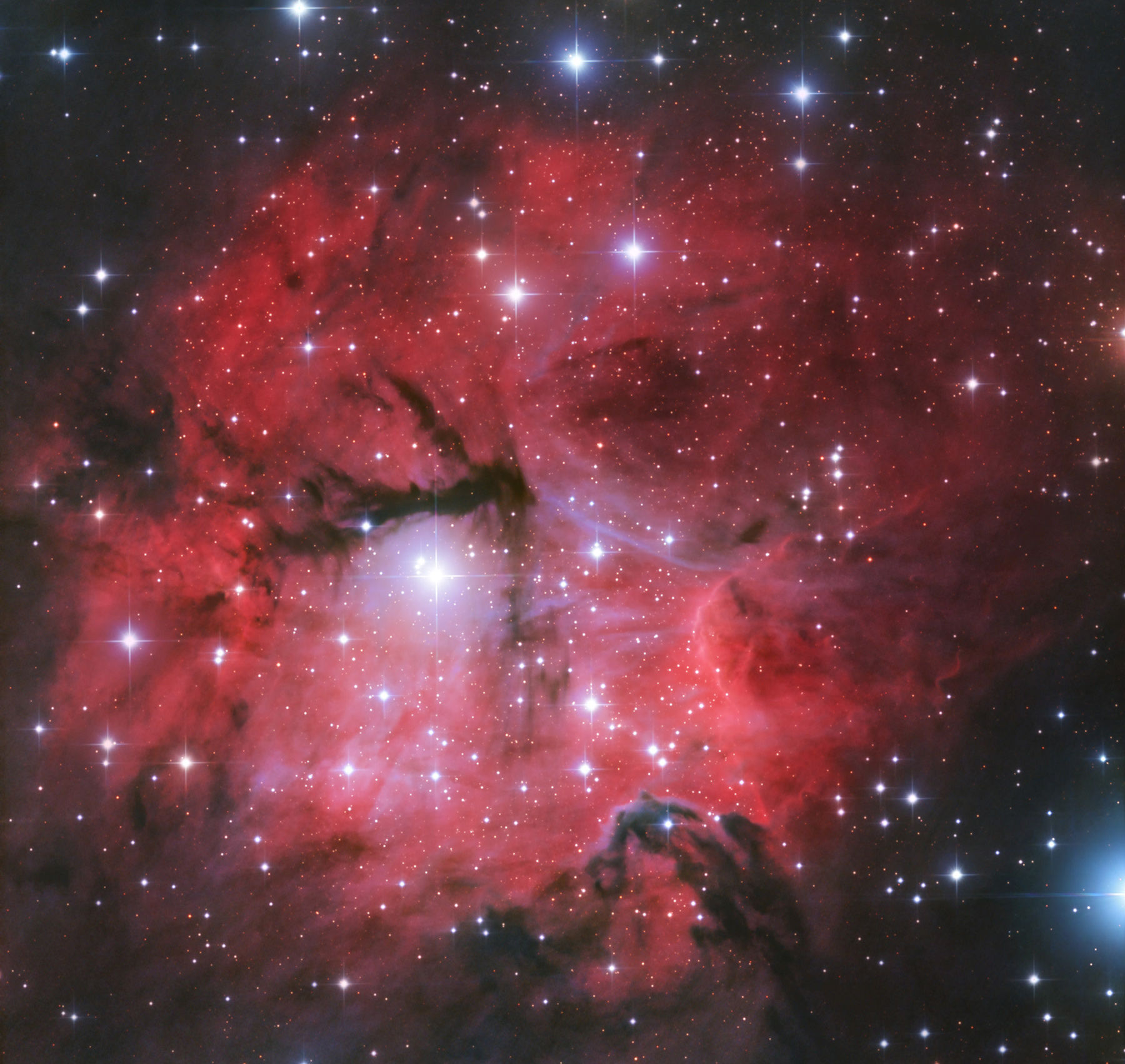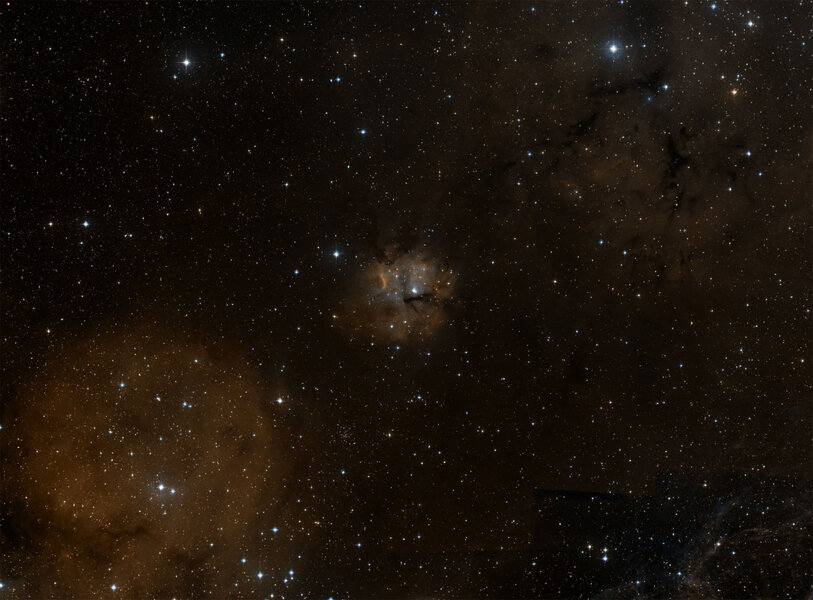Create a free profile to get unlimited access to exclusive videos, sweepstakes, and more!
Chewing over Gum 15: A gorgeous nebula in a much larger setting

Every now and again I'll see a nebula I've never seen before, and it's always a bit of a surprise. I've been doing this scicomm thing a long time, and astronomy in general even longer. I've seen a lot of stuff.
So seeing something new to me is a surprise, but it's a most welcome one. Especially when it comes from my friend Adam Block, who always sends me great stuff.
Like Gum 15, a nebula about 2,500–3,000 light years away in the southern constellation of Vela:
Wow! This is a classic emission nebula, glowing red due to warm hydrogen gas. See that bright star right in the middle? That's HD 74804, a blue star that is blasting out light that is absorbed by the atoms in the gas around it, making their electrons jump up an energy level. When the electrons jump back down, they emit a characteristic red hydrogen-alpha photon.
You can also see wisps of blue, too. Those are dusty streamers, reflecting and scattering the blue light of the star back to us. You can see dark dust all through the nebula; that thick lane in the middle reminds me of the Trifid Nebula, in fact. That stuff is probably behind the star, on the far side from our viewpoint, so we don't see the scattered light.
Also, to the right, you can see what looks like the bright outline of a dark mountain, pointing inward toward the star. That’s called SFO 58, and when I saw it a light bulb went off in my head. I strongly suspect Gum 15 is a cavity in the side of a big molecular cloud!
Molecular clouds are huge, cold, dark clumps of gas and dust. They can be many light years across and have hundreds of thousands of times the Sun's mass worth of gas and dust in them! Stars forms inside such beasts, and if they happen near the edge of the cloud, massive stars blasting out ultraviolet radiation eat away at the material and pop through the side like a weak spot in an inflated balloon. The Orion Nebula is a classic example of this.
Sure enough, when I checked a wider field of view I could see the edges of the nebula fading away in much the same way other cavity-eating blisters do. If this were in isolated gas cloud hanging out in space, the edges would be much better defined. A fuzzy boundary like this can indicate there's a lot more material outside the brightly lit part, still dark because the material itself absorbs the starlight (or the star light is too weak to get very far). I'll note that a huge molecular cloud complex is located very close to Gum 15, strengthening my suspicion.
Also, that mountain, SFO 58, I mentioned? That would be the inside wall of the cavity in the larger molecular cloud, where material is still being eroded by the star's light. The bright rim is where the material is photodissociating, dissolving under the withering blast from HD 74804. That’s another common feature in blisters; the Eagle Nebula’s Pillars of Creation are the iconic examples there. Incidentally, stars are forming inside SFO 58, too. This nebula is nowhere near being done making stars.
Again, this nebula being in the side of a molecular cloud is just a suspicion of mine, but I’m bringing evidence to the table. And even if it’s not, it's still absolutely lovely. I found several other images of it online, including one by a big 'scope run by the ESO, but I’ll be honest: Adam’s is the prettiest I saw. Producing an image like this us more than just taking a bunch of observations and slapping them together. There’s a lot of processing involved, and a lot of that is really art. It's hard to know how to get the colors balanced just so, what parts of the image to clean more aggressively of cosmic rays and which to leave alone because they may be faint stars, and much more. Adam has great eye for this, as I think you'll agree. I'm always happy to share his work.
















